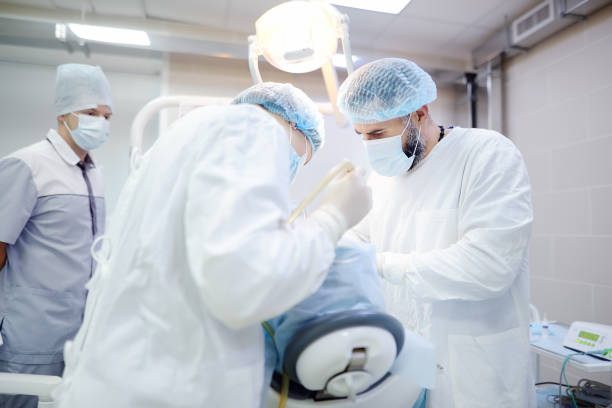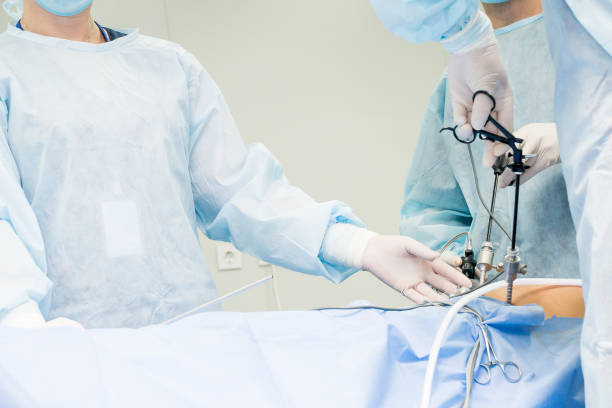Treatments Cyst Removal: A Step-by-Step Guide | Revitalise London

Skin growths in the form of cysts are common and can occur anywhere on the body. Most are harmless, but if they become bothersome or painful, surgical cyst removal may be necessary to regain comfort and peace of mind. Cysts feel a bit sore and can become painful or infected, thus making cyst removal by surgery the best solution. With this procedure, cysts can be eliminated safely and effectively before complications occur.
Skin cells, fluid, or other substances trapped beneath the skin form cysts. Different types and sizes of cysts are available, with sebaceous, epidermoid, and ganglion cysts being the most common. Some cysts will go away independently, while others will remain and may need to be treated by a doctor.
Cysts growing, causing discomfort, or at risk of infection are usually recommended for surgical removal. This procedure is quick, done under local anaesthesia, and has a short recovery time. Professional removal is chosen because the whole cyst is removed, thus decreasing the chances of recurrence.
This guide takes you step by step through surgical cyst removal, from when you will need it to prepare for surgery to what you can expect during and after the procedure. Understanding what happens if you have a cyst removed will help you feel more comfortable removing one.
What makes Surgical Cyst Removal Necessary?
Some cysts need to be removed, but not all cysts do, and in some cases, surgical cyst removal is the best option. Small, painless, and non-growing cysts may not require intervention. Often, medical professionals recommend removal when a cyst is problematic.
Pain or discomfort is one of the main reasons that a cyst is removed. However, surgery is the best solution if a cyst puts pressure on nerves, grows on a sensitive area, or makes daily activities uncomfortable. Another common reason is infection. Abscess formation may occur with a cyst, which can become red, swollen, and pus-filled. Complete removal may be preceded by drainage of infected cysts.
Sometimes, cysts come back or grow more prominent, which could be a sign of other problems. In other cases, repeated inflammation makes surrounding tissue more challenging to treat. This prevents regrowth because the entire cyst, including its sac, is removed.
Some people choose surgical removal for cosmetic reasons. Embarrassing visible or large cysts can also be seen on the face, neck, or hands. A simple procedure can improve skin appearance, which can help boost confidence.
Surgery is necessary; medical evaluation is needed to determine this. The cyst will be assessed by a professional who will recommend the best action and discuss the symptoms. However, if removal is advised, prompt action is required to prevent further complications.
Surgical Cyst Removal
Surgical cyst removal is an exact procedure that removes cysts with a minimal risk of recurrence. The method is detailed below with a step-by-step breakdown.
Step 1: Consultation and Assessment
The doctor will examine the cyst before the procedure to see if it is large or of a particular type and where it is situated. Cysts may need extra imaging tests like ultrasound or MRI to determine their depth and appearance, which allows for planning the best surgical approach.
The doctor may recommend antibiotics or drainage if the cyst is infected or inflamed before scheduling the removal surgery.
Step 2: Preparing for the Procedure
The area around the cyst is cleaned thoroughly on the day of the surgery to avoid infection., The area is numbed with local anaesthesia so the patient does not feel any pain during the procedure. Very rarely, if the cyst is significant or in a sensitive place, sedation or general anaesthesia may be needed.
Step 3: Making the Incision
When the area is numb, the surgeon makes a small incision over the cyst—the bigger the incision, the deeper and more extensive the cyst. The aim is to obtain the cyst without harming the surrounding skin.
The doctor may drain the cyst first if it is fluid-filled or infected before attempting to remove it.
Step 4: Removing the Cyst Sac
This is the most essential part of the surgery. The surgeon separates the cyst from its surroundings and removes the entire sac. There is a risk of recurrence if any part of the cyst wall remains.
Surgical precision is needed to make cysts deeper without damaging nearby structures such as nerves and blood vessels.
5. Cleaning and closing the wound
After removing the cyst, the wound is cleaned well to remove all the remaining debris. The incision size will determine whether the surgeon uses dissolvable or standard stitches, which must be removed after 7 to 14 days.
After that, a sterile dressing is used to cover the area and help it heal.
Step 6: Post-Surgery Care and Recovery
After the procedure, patients receive aftercare instructions to prevent infection and help healing. These typically include:
Maintaining the area dry and clean
- Following the advice of the doctor regarding changing dressings
- Not putting too much movement or pressure on the treated area
- If prescribed to take painkillers or antibiotics
Most patients experience minor discomfort, and recovery takes one to two weeks. The scar from the incision fades over time, but complications are rare with proper care.
What is the Time Duration of Surgical Cyst Removal?
Factors determining the duration of surgical cyst removal include the cyst's size and location, the procedure's complexity, and the patient’s overall health. The time required for each process stage is shown below in detail.

Consultation and Pre-Surgical Preparation
A specialist then sees patients before the surgery to see if the cyst needs removal. This lasts 15 to 30 minutes, and during it, the doctor might include:
- Look at the cyst and the surrounding skin.
- It may recommend imaging tests (such as an ultrasound) if necessary
- Discuss the best removal method
- Tell of potential risks and aftercare instructions
The doctor may suggest a short course of antibiotics before surgery if the cyst is infected.
Duration of the Surgical Procedure
The surgery itself is usually quick and straightforward on the day of. The time spent in the clinic or hospital depends on the case's complexity.
- Superficial cysts that are small: These can be removed in 20 to 30 minutes under local anaesthesia.
- These cysts may take 30 to 60 minutes to remove, particularly those that are larger or deeper and might need more careful dissection.
- Complicated cases: In a difficult case where the cyst is in a sensitive area (close to nerves and joints), the procedure can take over 60 minutes.
- The surgical removal involves an incision, extraction of the cyst sac, and closing the wound with stitches.
Recovery and Post-Procedure Observation
Patients are monitored after surgery for 10 to 15 minutes to make sure they are not having any immediate complications, such as bleeding excessively or having an allergic reaction to the anesthesia.
For more complex procedures, the monitoring period may last up to one hour before discharge, especially when sedation or general anaesthesia is used.
Total Period of Cyst Removal Treatment
In most cases, patients should expect 1 to 2 hours for the surgical cyst removal, including preparation, post-operative care, and the procedure. However, if further tests or pre-treatment steps are needed, the whole treatment process will take a few days to weeks from the first consultation to recovery.
What to Expect After Surgical Cyst Removal?
If surgical cyst removal is performed, recovery is essential to facilitate proper healing and prevent complications. This overview covers what to anticipate immediately following the procedure, how to manage pain, and what conditions might appear.
Immediate Post-Surgery Effects
Most of the mild side effects experienced happen immediately after the surgery. Some signs are mild pain or discomfort at the surgical procedure site, swelling, and/or redness in the first few days. Bleeding or fluid drainage is common, but it will stop within a few hours to a day and should not be excessive.
The feeling of numbness and tingling in the area surrounding the nerve near the cyst may be present if it is close to a nerve, but it should last only a few days.
Pain Management and Aftercare
It is essential for a smooth recovery to manage discomfort after the procedure. Typically mild, it can be managed with over-the-counter paracetamol or ibuprofen. Also, a cold compress can help reduce swelling and relieve any pain in the area of the surgical site.
Cleaning the area and following your doctor’s instructions for changing dressings are essential. Do not touch or scratch the site to avoid introducing bacteria that can cause infection.
If you have non-dissolvable stitches, you’ll need to return for them to be removed in about one to two weeks. Wherever dissolvable stitches have been used, they will have dissolved naturally as your skin heals.
Healing Timeline
Typically, the healing process following a surgical cyst removal works according to this timeline:
- Days 1 to 3 or 5: There may be swelling and tenderness that tends to go away.
- If non-dissolvable, stitches will be removed one to two weeks after surgery, and the wound will begin to close.
- Healing will continue internally for three to four weeks, but most of the outside wound will be healed within that time.
- Time, several months: The scar will fade and become less noticeable.
Most patients' cysts disappear within a few days to a week and they return to normal activities a few days to a week after treatment.
Potential Complications
A few potential complications may occur after surgical cyst removal, although rare.
- Excessive redness, warmth, pus drainage, and fever are signs of infection. They should prompt you to contact your healthcare provider.
- The cyst could return if only part of the cyst sac is removed.
- More noticeable scars: Larger cysts or deeper incisions will create scarring.
- Individuals may take longer due to diabetes or poor circulation.
However, if any of these complications develop, seeing a doctor as soon as possible is essential to prevent further problems.
When Should You Visit Your Doctor After Having Surgical Cyst Removal Done?
Many patients can expect to heal from surgical cyst removal without incident, but there are situations in which medical care is needed. Here are the symptoms and signs of a problem that warrants immediate attention.

Signs of Infection
There is often an infection after surgery. You are expected to have some swelling and redness, but if you have any of the following signs, you should contact your healthcare provider immediately.
- Redness or swelling around the incision site may increase.
- Pus drainage or unusual discharge from the wound
- Fever above 100.4°F (38°C)
- Inflammation as indicated by warmth at the site of the surgery
The infections can be treated with antibiotics, but you need to see a doctor as soon as possible so the disease doesn’t spread or worsen.
Excessive Bleeding
If bleeding is expected during the first few hours after surgery, excess bleeding could be a problem. If the wound continues to bleed profusely, even after you have put pressure on it or applied a dressing, it is essential to consult your doctor or go to the emergency room.
Severe Pain or Discomfort
- Normal: Mild discomfort after the procedure is standard and can be treated with over-the-counter painkillers.
- If the pain worsens or the area is swollen, it is best to see your healthcare provider.
Delayed Healing or Opening of the Wound
The wound can sometimes open up or heal slower than usual. There are several reasons, such as infection, poor circulation, or underlying medical conditions, such as diabetes. Your doctor may check the incision site if it starts opening or if healing does not occur within an appropriate period.
Signs of Recurrence
If some cyst sacs remain behind, the cyst may return, but this is rare. Signs of a cyst you should look for are if you notice any of the following:
- A lump in the area where the original cyst was.
- Swelling or redness that comes back or doesn’t heal after the first healing period
In such cases, further treatment or removal may be necessary.
When to Call for Help
If you have symptoms such as those listed above or are concerned about your recovery, it is always better to seek advice from a healthcare provider. At times, it can be critical for the disease to be treated early so that it does not aggravate further, creating complications and a smoother recovery.
Why Choose Revitalise London for Surgical Cyst Removal?
Selecting a trusted and experienced provider when choosing a clinic for your surgical cyst removal is essential. We aim to provide top-quality care, advanced techniques, and patient focus at Revitalise London. Revitalise London should be your first choice for surgical cyst removal.
Experienced and Skilled Surgeons of Surgical Cyst Removal
Our team of highly qualified and experienced specialists are experts in performing surgical cyst removals at Revitalise London. They are well-versed in different cysts and know the best methods to remove them with precision and minimum risk. Once you walk through our doors, you can feel comfortable that capable hands will be on you.
Comprehensive and Personalised Care Surgical Cyst Removal
We treat every case individually, and each patient is unique. We know you have many concerns, medical history, and specific needs, and we take it upon ourselves to ask for your name, problems, medical history, and particular needs. We offer the highest quality of comprehensive and personalised support from the beginning of the consultation to post-surgical care follow-up.
State-of-the-Art Technology and Facilities
At Revitalise London, the most recent medical technology and equipment are used, ensuring that your Cyst Removal procedure is as effective as possible. Your safety is paramount, and our facilities are more advanced than others, designed to minimise the risk of complications.
Surgical Cyst Removal Exceptional Aftercare
Our care isn’t complete once the procedure has ended. It is aftercare that we can provide you with extensive care to support your recovery and to heal you properly. If any questions or concerns occur, our team can always help and offer follow-up appointments to monitor your progression and ensure no complications.
Trusted Reputation and Positive Feedback For Surgical Cyst Removal
With a reputation for delivering high-quality, reliable care, Revitalise London has earned its name. Again, our happy clients always leave positive reviews, commending our staff for their professionalism, celebrating their treatment's success, and loving the whole experience. We are ready to assist you in improving your quality of life with excellent care and attention throughout the cyst removal process.
Revitalise London is a trusted clinic for surgical cyst removal. Our team offers great expertise, care, and support, and we are ready to give you what you need for a successful procedure and recovery. If you want to get started on the path to removing cysts, contact us today for a consultation.
